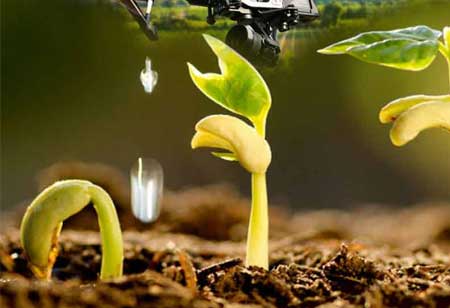Thank you for Subscribing to Agri Business Review Weekly Brief
How Smart Irrigation Systems can Help You Reap Benefits
The benefits of smart irrigation systems include the reduction of manpower costs, water conservation, and facilitating a fine irrigation system.

By
Agri Business Review | Wednesday, February 01, 2023
Stay ahead of the industry with exclusive feature stories on the top companies, expert insights and the latest news delivered straight to your inbox. Subscribe today.
The benefits of smart irrigation systems include the reduction of manpower costs, water conservation, and facilitating a fine irrigation system.
FREMONT, CA: In smart irrigation, science and technology is used to save water. It consists of weather sensors, soil sensors, and various controllers. A sensor monitors the current weather conditions and the actual ground humidity, and a controller controls the water valve. It also automates irrigation. Whether, when, and how much water is needed is based on scientific judgment. In lawns, farmland, landscapes, and other areas, it is suitable for water-saving management.
A smart irrigation system integrates technologies such as the Internet of Things (IoT), mobile Internet, LORA, and remote sensing monitoring. The wireless control valve switches from a distance. It is necessary to save irrigation water by providing plants with the right amount of water based on soil type and weather conditions. Smart irrigation systems mainly use sensor technology, automatic control technology, and computer technology. Garden irrigation methods such as sprinkler irrigation and drip irrigation can be combined.
Composition of smart irrigation systems: Because the smart irrigation system is capable of automatic water-saving irrigation, its composition is relatively complex. In general, it consists of a monitoring part, a control part, a transmission part, and a terminal platform. A unit is formed by combining different accessories.
Monitoring part: Smart irrigation units are monitored by various sensors. There are six main sensors: soil moisture sensor, wind speed sensor, evaporation sensor, leaf wetness sensor, rain and snow sensor, and data collector.
Control part: Automatic irrigation relies on a variety of control valves. Remote-switching valves include butterfly valves, pulse valves, ball valves, etc. Depending on the irrigation area, choosing different valves and water pipes is crucial.
Transmission part: Data signals and command signals are transmitted between the terminal and the control terminal. Lora wireless transmission requires a gateway and data concentrator. The router and monitoring host is the transmission parts of home wifi.
The platform for terminals: In general, a terminal platform is a software system for sorting and analyzing data. Data can be analyzed, stored, and control instructions can be issued. Operating systems for mobile phones and computers are supported by the platform software.
Some of the key advantages of smart irrigation systems are:
Manpower can be saved: Smart irrigation differs from traditional irrigation methods in that it is automated. There is no need for the irrigator to walk around the irrigation field with the nozzle. The water valve does not need to be opened or closed manually. The entire irrigation process can be completed using a mobile phone or a computer.
Water-saving: By replacing flood irrigation with smart irrigation, water is saved. Plants grow faster with less water. Soil moisture data can be collected, and irrigation water can be controlled effectively by using smart irrigation systems. A water-saving circulation system is also included.





